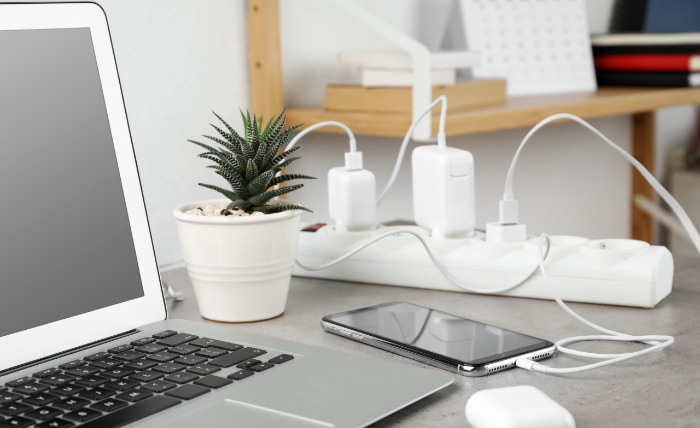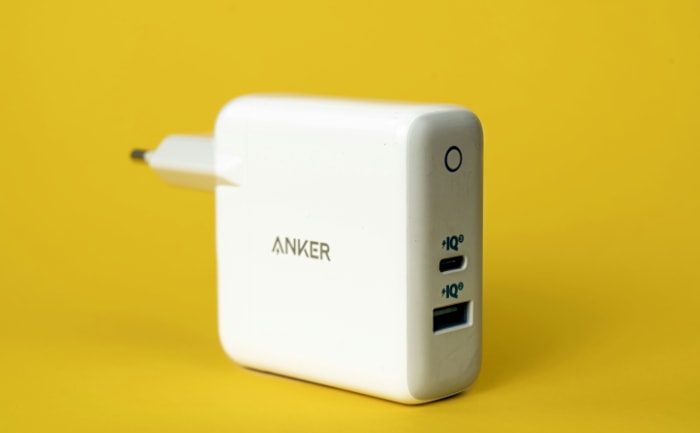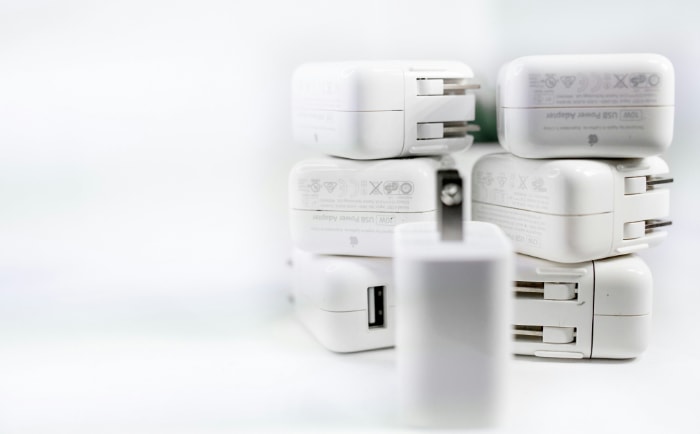How to Identify a Fast Charger: Key Specs to Look For

Fast charging has transformedthe way we power up our devices, offering a much-needed respite from the anxiety and inconvenience of low battery woes. No longer do you need to be tethered to a wall outlet for hours on end, watching your phone or tablet slowly come back to life.
With the advent of advanced charging technologies, you can now give your device a significant boost in a matter of minutes, ensuring you’re always ready to tackle whatever the day throws your way.
However, with so many fast charging options available on the market, it can be challenging to determine which charger will truly deliver the lightning-fast speeds you crave. From wattage and amperage to USB standards and compatibility, there’s a lot to consider when selecting the perfect fast charger for your needs.
Fast Charging Technologies Explained
Fast charging technologies have become increasingly popular in recent years, offering users the ability to charge their devices quickly and efficiently. To fully grasp the concept of fast charging, it’s essential to understand the differences between standard and fast charging, as well as the various fast charging standards available on the market.
Standard Charging vs. Fast Charging
Standard charging typically involves a 5V/1A or 5V/2.4A charger, which delivers a relatively slow charging speed. These chargers are often bundled with devices or can be purchased as generic, low-cost options.
On the other hand, fast charging technologies utilize higher voltages and currents to significantly reduce charging times. Fast chargers often provide 18W, 30W, 45W, or even higher wattages, resulting in much quicker charging speeds compared to standard chargers.
Fast Charging Standards
Several fast charging standards have emerged, each with its own unique features and specifications. Some of the most common fast charging standards include:
- USB Power Delivery (USB-PD): A universal fast charging standard that supports a wide range of voltages and currents, up to 100W. USB-PD is commonly used by Apple, Google, and other manufacturers.
- Qualcomm Quick Charge: Developed by Qualcomm, this standard is widely adopted by Android device manufacturers. Quick Charge has evolved through several versions, with Quick Charge 4+ being the latest, offering up to 100W of power.
- OnePlus Warp Charge: A proprietary fast charging technology used by OnePlus devices, providing up to 65W of power for incredibly fast charging speeds.
- Oppo VOOC: Another proprietary fast charging solution, used by Oppo and some Realme devices, offering up to 65W of power.
- Huawei SuperCharge: Huawei’s fast charging technology, which supports up to 66W of power for its devices.
Compatibility Matters
When choosing a fast charger, it’s crucial to ensure compatibility between the charger and your device. Using a charger that is not compatible with your device’s fast charging standard may result in slower charging speeds or even potential damage to the device.
Always refer to your device’s specifications and manufacturer recommendations when selecting a fast charger to ensure optimal performance and safety.
Identifying Fast Chargers
When shopping for a fast charger, it’s essential to know what specifications to look for to ensure you’re getting a device that will provide the fastest possible charging speeds for your smartphone, tablet, or laptop.
Wattage
One of the most important factors in determining a fast charger’s speed is its wattage. Higher wattage chargers can deliver more power to your device, resulting in faster charging times.
When comparing fast chargers, look for options with wattages such as 18W, 30W, 45W, or even higher. Keep in mind that your device’s maximum supported wattage will determine the actual charging speed you experience.
Amperage and Voltage
In addition to wattage, pay attention to the amperage and voltage outputs of a fast charger. Chargers with higher amperage, such as 3A or more, can deliver more current to your device, which can lead to faster charging.
Similarly, chargers with higher voltage outputs, like 9V or 12V, can provide more power than the standard 5V output found in most conventional chargers.
USB-C
USB-C is the latest USB standard and is quickly becoming the norm for fast charging devices. USB-C supports higher power delivery than its predecessors, allowing for faster charging speeds.
When looking for a fast charger, opt for one with a USB-C port, as this will ensure compatibility with the latest devices and provide the fastest possible charging speeds.
Cable Quality
The quality of the charging cable can also impact fast charging performance. Look for chargers that come with high-quality, durable cables.
Thicker, braided cables with larger gauge wires can handle higher currents without overheating, ensuring a safe and efficient charging experience. Avoid thin, flimsy cables that may not be able to support fast charging speeds or could potentially damage your device.
Visual Cues and Certifications

When you’re in the market for a fast charger, it’s not always easy to determine which products genuinely support fast charging just by looking at them. However, there are several visual cues and certifications you can look for to help you identify a true fast charger.
Branding and Labels
One of the easiest ways to spot a fast charger is by looking for specific terms or phrases on the charger itself or its packaging. Keep an eye out for labels such as “Fast Charging,” “Rapid Charge,” or “Quick Charge.”
These terms generally indicate that the charger supports one or more fast charging standards. However, be cautious of generic terms like “High-Speed Charging” or “Turbo Charging,” as these may not always refer to genuine fast charging capabilities.
In addition to these common terms, you may also find branding specific to a particular manufacturer or device. For example, Samsung’s fast chargers often feature the “Adaptive Fast Charging” label, while OnePlus chargers may display “Warp Charge” or “Dash Charge” branding.
Apple’s fast chargers are typically labeled with “USB-C Power Delivery” or simply “USB-PD.”
It’s important to note that not all chargers with fast charging labels will necessarily support the fastest charging speeds available for your specific device. To ensure optimal performance, look for chargers that explicitly mention compatibility with your device or the fast charging standard it supports.
Logos and Certifications
Another way to identify a fast charger is by looking for logos or certifications that denote specific fast charging standards. These logos help you quickly identify which fast charging standards a particular charger supports, ensuring compatibility with your device.
Some common fast charging logos to look for include:
- USB Power Delivery (USB-PD): A standard logo featuring a battery with a lightning bolt inside, along with the letters “PD.”
- Qualcomm Quick Charge: A logo with the letter “Q” followed by the Quick Charge version number (e.g., Quick Charge 3.0, 4+, or 5).
- Programmable Power Supply (PPS): An extension of the USB-PD standard, chargers with PPS support may feature a logo with “PPS” or “USB PD 3.0” text.
- Proprietary fast charging technologies: Some manufacturers, such as OnePlus (Warp Charge) or Oppo (VOOC), have their own fast charging logos that indicate compatibility with their devices.
Verifying Fast Charging Performance
Once you’ve identified a potential fast charger for your device, it’s essential to verify that it’s delivering the expected charging performance. There are several ways to confirm that your charger is providing fast charging speeds to your smartphone, tablet, or laptop.
Built-in Phone Indicators
Most modern smartphones and tablets have built-in indicators that notify you when the device is receiving a fast charge. These indicators can help you quickly determine if your charger is delivering the expected fast charging performance.
When you connect your device to a fast charger, look for a “Fast Charging” or “Charging Rapidly” message on the screen. Some devices may display a lightning bolt icon next to the battery percentage to signify that fast charging is active.
If you see these indicators, it’s a good sign that your charger is working as intended.
However, if you don’t see any fast charging indicators, your device may be receiving a standard, slower charge. This could be due to using a charger that doesn’t support your device’s fast charging standard, using a low-quality or damaged cable, or a compatibility issue between the charger and your device.
Measuring Charging Speed
Another way to verify fast charging performance is by measuring the actual charging speed of your device. There are a few methods you can use to gauge how quickly your charger is replenishing your device’s battery.
One option is to use a charging speed app, such as Ampere or AccuBattery, which can measure the current (in mA) being delivered to your device. These apps can help you determine if your charger is providing the expected fast charging speeds and can also help you identify any issues that may be impacting charging performance.
Alternatively, you can measure charging speed manually by timing how long it takes for your device to charge from a specific starting point (e.g., 0% or 20%) to a target percentage (e.g., 50% or 80%). To do this, follow these steps:
- Drain your device’s battery to the desired starting point.
- Connect your device to the fast charger and note the start time.
- Monitor your device’s battery percentage and stop the timer when it reaches the target percentage.
- Compare the charging time to the manufacturer’s claims or to other fast chargers you’ve tested.
Keep in mind that factors such as your device’s age, battery health, and temperature can impact charging speeds, so it’s essential to test under similar conditions for the most accurate results.
Comparing Chargers
If you have multiple fast chargers available, you can compare their performance by testing them with the same device under similar conditions. This can help you identify which charger provides the fastest charging speeds for your specific device.
To compare chargers, follow these steps:
- Ensure your device’s battery is at the same starting percentage for each test.
- Connect your device to the first charger and measure the charging speed using one of the methods described above.
- Repeat the process with the other chargers, making sure to start from the same battery percentage each time.
- Compare the results to determine which charger offers the best performance for your device.
Common Misconceptions and Myths About Fast Chargers

Despite the growing popularity of fast chargers, there are still many misconceptions and myths surrounding their use and performance.
Myth 1: Fast Charging Damages Your Device’s Battery
One of the most prevalent myths about fast charging is that it can damage your device’s battery over time. However, modern devices and fast charging technologies have built-in safeguards to prevent overheating and overcharging, which are the main causes of battery degradation.
Reputable manufacturers design their fast chargers and devices to work together safely, ensuring that the battery charges at the optimal rate without causing long-term damage. While it’s true that fast charging can generate more heat compared to standard charging, the difference is minimal and well within safe limits.
Myth 2: All Chargers with the Same Wattage Offer the Same Charging Speed
Another common misconception is that all chargers with the same wattage rating will charge your device at the same speed. However, factors such as the charging standard, cable quality, and device compatibility also play a significant role in determining the actual charging speed.
For example, a 30W USB-PD charger may charge your device faster than a 30W charger that only supports an older charging standard like Quick Charge 2.0. Similarly, using a low-quality or damaged cable can limit the charging speed, even if you have a high-wattage charger.
Myth 3: Fast Charging Works the Same for All Devices
It’s important to remember that not all devices support fast charging, and even among those that do, the specific fast charging standards and speeds can vary. For example, an iPhone with USB-PD support may charge at a different rate than an Android device with Quick Charge 4+ support, even when using the same charger.
To ensure optimal fast charging performance, it’s crucial to use a charger that is compatible with your device and supports the appropriate fast charging standard. Always consult your device’s manual or manufacturer’s website for specific charging recommendations.
Myth 4: Fast Charging Is Always Necessary
While fast charging is undeniably convenient, it’s not always necessary or even desirable in every situation. If you’re charging your device overnight or have access to a power outlet for an extended period, using a standard charger may be more energy-efficient and generate less heat.
Additionally, some devices may offer multiple charging speeds, allowing you to choose between fast charging and a slower, more battery-friendly charging mode. In such cases, consider your charging needs and prioritize battery health when deciding whether to use fast charging or not.
Conclusion
In a world where staying connected is paramount, fast chargers have become indispensable accessories for keeping our devices powered up and ready to go. By understanding the various fast charging technologies, identifying key specifications, and recognizing visual cues and certifications, you can confidently select the best fast charger for your needs.
Remember to prioritize compatibility, safety, and performance when choosing a fast charger, and always verify that your device is receiving the expected charging speeds. With the right fast charger in hand, you’ll never have to worry about running out of battery life at the most crucial moments.


